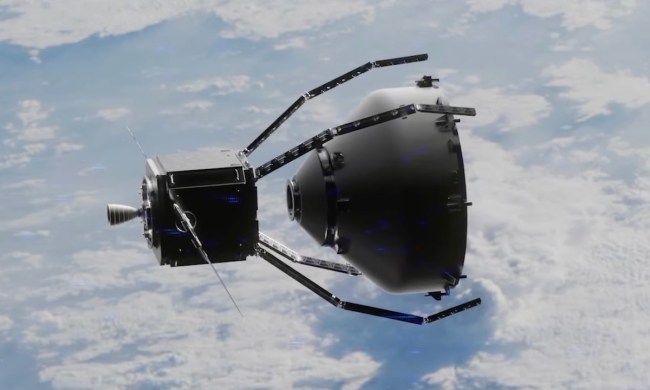The current and future operation of satellites could be under threat from space debris, warn astronomers from the University of Warwick in the U.K. The junk floating in orbit around our planet could damage satellites which are essential for communications, navigation, and weather monitoring.
The astronomers performed a survey of objects in geosynchronous orbit and found that over 75% of the debris detected was not previously recorded in satellite catalogs, which list known debris pieces. This shows there is a significant amount of debris in orbit we are not currently tracking and which could pose considerable risk to active satellites.
The survey looked specifically for faint pieces of debris that are too small or not reflective enough to be seen by most survey tools. We know about most larger pieces of debris down to one meter in size, but we don’t generally track smaller pieces. But smaller pieces can still be very dangerous — imagine a bullet being shot through space which could easily rip through a satellite.
To spot these smaller objects, the survey used the Isaac Newton Telescope on the Canary Island of La Palma to observe variations in the brightness of objects over time, which can be used to work out an object’s shape and altitude.
The problem of space debris is only increasing as we leave more and more objects like deactivated satellites or discarded rocket parts in orbit. These objects may be moving at tremendous speeds and if they impact each other, they can leave smears of debris across large areas of the sky, making that patch dangerous to maneuver through.
Just this week, the International Space Station had to be moved to dodge a piece of space debris that came within one mile of it. And in 2016, ESA astronaut Tim Peake took a photo from inside the ISS showing a chip in a window thought to be caused by an impact from a piece of space debris.
As well as threatening crewed locations like the ISS, space debris also potentially threatens scientific instruments like the Hubble Space Telescope. Hubble and the ISS are in low earth orbit, but there is a similar problem with debris there as in the geosynchronous orbit used by many satellites. And satellites have already been victims of collisions with debris in the past, such as an active communications satellite which impacted a deactivated Russian satellite in 2009.
And there’s another problem. Not only are there many more objects than we currently have cataloged floating in geosynchronous orbit, but many of them are tumbling, meaning they would be hard to clean up. “Many of the faint, uncataloged debris appear to be tumbling, showing significant brightness variation across the observation window,” lead author James Blake, a doctoral student in the University of Warwick Department of Physics, said in a statement.
To understand the scope of the problem of smaller pieces of debris, the researchers say we need to make more observations with large telescopes than can detect these small objects. “It’s important that we continue to observe the geosynchronous region with large telescopes wherever possible, to start to build up a more complete feel for the faint debris environment,” Blake said.
“With this survey, we’ve probed deeper than ever before, and still the population appears to be climbing as our sensitivity limit is reached. While we’re dealing with small number statistics here, it’s unsurprising that we see many more small, faint objects than large, bright ones.”



